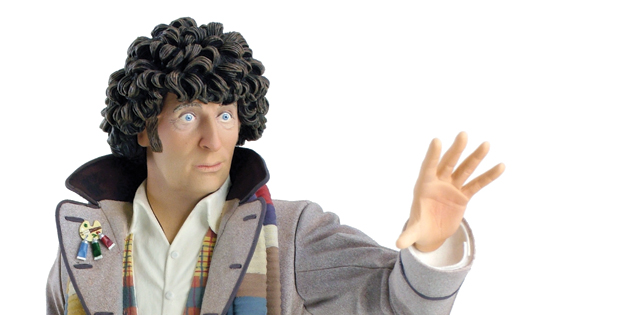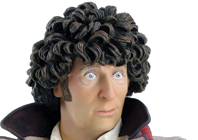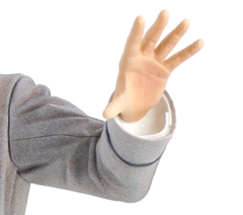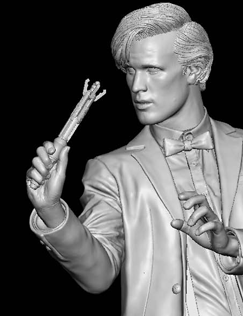
The unmistakeable features of Tom Baker
The design
With the emphasis on getting the most lifelike product possible, the design is a blend of artistic talents and sculpting know-how from the team at Designworks in Windsor.
From screen to shelf
After initial sketches have been approved by the client the designer is tasked with sourcing as much pictorial data as possible to work from. A special waistcoat from an early episode? Consult the internet.
In the weave
The designer lays textures over the 3D CAD model to help achieve the most realistic results – items of clothing like the thick woven scarf can be more accurately sculpted.
Face time
In some cases the actual actor can be digitally scanned, giving a guide to the real life scale and features. However accurate the scan is, a sculptor is always needed to capture a more ‘human’ expression, movement, plus the hair and eyes the scanner can’t pick up.
Touchy-feely
The designer uses 3D CAD to digitally sculpt the figure – this is done using Sensable’s FreeForm software, as well as one of its Phantom arms – a haptic device that gives the user feedback as though sculpting a block of clay in real life.
Prototyping
The CAD model is sent out to Industrial Plastic Fabrications (IPF) in Essex, which builds prototypes using a highly precise Envisiontec Perfactory Mini MML that prints in resin for the faces, and an Objet Connex500 for the bodies.
Approval
A full prototype is completed and set before the actor and persons from the BBC for their approval.
Manufacturing a Doctor
The final tooling and production takes place in the Far East, with the figurines moulded in a special polyurethane resin that gives the appearance, coolness and weight of a porcelain statue, before finishing and painting.
Price
Your own Tom Baker for under £60? “It’s the end!”

The Timelord is immortalised in polyurethane
Default








